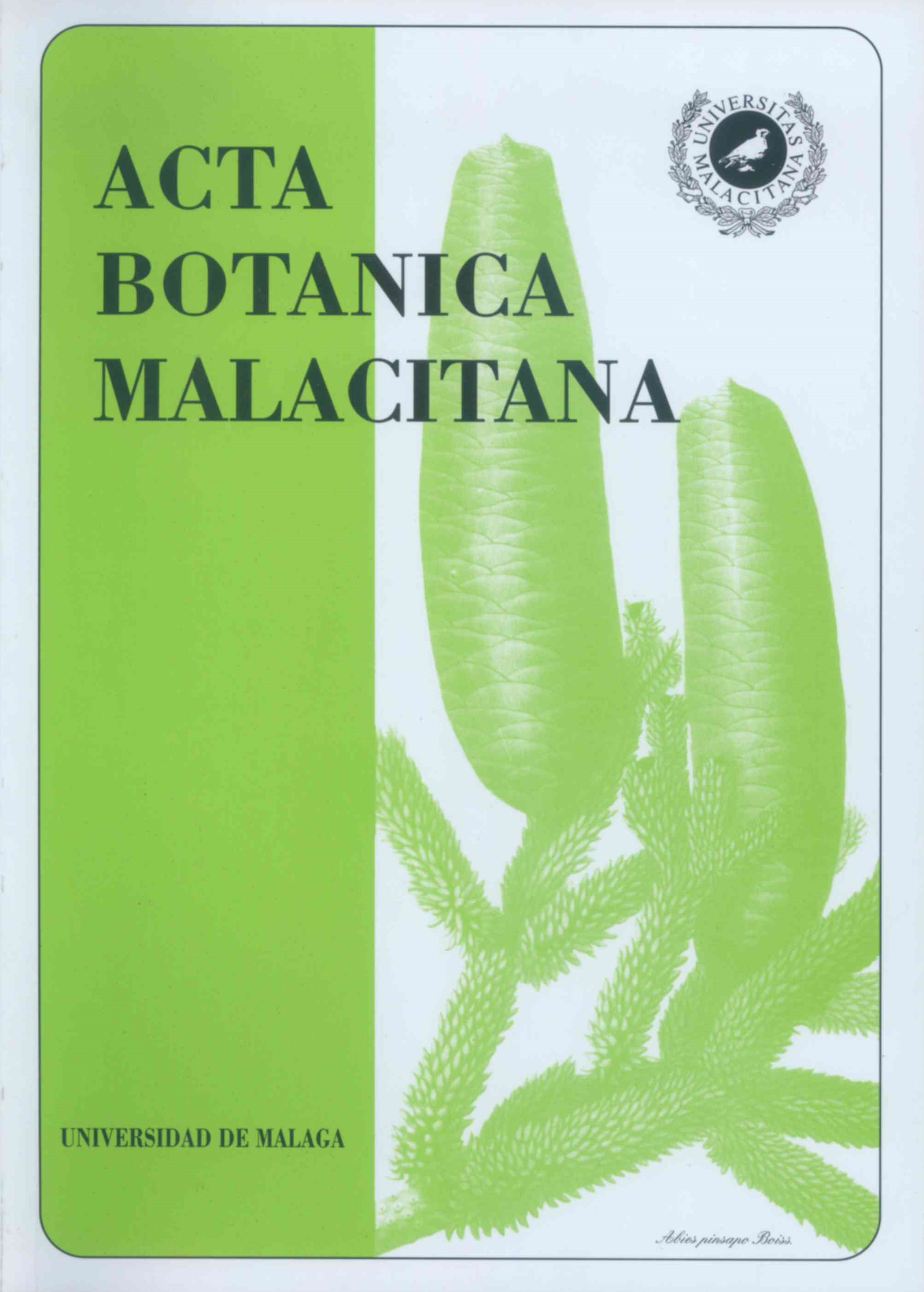El polen de Poaceae en la atmo?sfera de Lugo y su relacio?n con los para?metros meteorolo?gicos (1999-2001).
DOI:
https://doi.org/10.24310/abm.v27i0.7308Abstract
RESUMEN. El polen de Poaceae en la atmósfera de Lugo y su relación con los parámetros meteorológicos (1999-2001). Se han estudiado las concentraciones de polen de Poaceae presente en la atmósfera de la ciudad de Lugo durante 3 años (1999-2001). Para ello se ha utilizado un captador volumétrico tipo Hirst, modelo Lanzoni VPPS-2000. El polen de Poaceae es el más abundante y su porcentaje frente al total de polen anual es de un 38-40%. La cantidad total de polen anual es de 8.400 granos como resultado de la media de los tres años de estudio, con un período de polinización durante los meses de Junio y Julio. A lo largo del día los máximos de concentración tienen lugar durante la tarde. Se ha realizado un análisis de correlación con los principales parámetros meteorológicos, siendo la temperatura máxima la variable que presentó el coeficiente más elevado. La suma acumulada de la temperatura máxima y la regresión múltiple integrando la temperatura máxima y las concentraciones de polen del día anterior como estimadores, resultaron métodos válidos y complementarios para realizar la predicción del inicio del periodo de polinización y de las concentraciones medias diarias que se alcanzan durante el periodo de polinización principal respectivamente.
Palabras clave. Polen, Lugo, Meteorología, Predicción, lntradiario, Poaceae.
ABSTRACT. The Poaceae pollen in the atmosphere of Lugo and its relationship with meteorological parameters ( 1999-2001). The pollen concentrations of Poaceae in the atmosphere of the city of Lugo has been studied during 3 years (1999-2001). A volumetric sampler type Hirst, model Lanzoni VPPS-2000 has been used. The Poaceae pollen is the most abundant and its percentage with respect to the total annual pollen ranged from 38-40 %. The annual total quantity of pollen of Poaceae were 8.400 grains as average of the three years studied, with a period of pollination during the months of June and July. The daily maximum concentrations take place during the evening. An analysis of correlation has been carried out between pollen concentrations and the main meteorological parameters, the maximum temperature being the variable that presented the highest coefficient value. The sum of maximum temperatures and the multiple regression integrating maximum temperature and pollen concentrations of the previous day as predictors, were successful and complementary methods in order to predict the beginning of the pollination period and the daily mean concentrations reached during the main pollen season respectively.
Key words. Pollen, Lugo, Meteorology, Prediction, Intradiurnal, Poaceae.
Downloads
Metrics
Downloads
Published
How to Cite
Issue
Section
License
All information related to the licensing of published works in Acta Botanica Malacitana and copyright can be found in our Editorial Policy.







1.png)
